Faster and better predictive analytics are enabling organisations to rethink their business models, beat the competition, and make real-time decisions.
More organisations want access to data not just for reporting but for calculating risks, detecting fraud, learning more about customers, and improving business performance, said Jim Goodnight, chief executive officer of SAS.
Analytics can help you rethink the way you do business Goodnight said in his keynote at the event in Sydney.
There are, two buckets of analytics: Reactive analytics, which include alerts and standard reports; and proactive analytics, including predictive modeling (which customers will leave or respond to a campaign), and forecasting.
Insights into your data and your customers
Why here and now for Predictive Analytics
1). The Future of Predictive Analytics Is Here Now
Over the past 10 years, advanced analytics grew exponentially to become one of the hottest topics in business technology. A look at Google Trends reveals an over 300 percent spike in searches for predictive analytics since 2010. Moreover, according to global business technology research group IDC Manufacturing, the advanced business analytics market grew to a $31.7 billion market. Predictive analytics is big and it deserves your attention.
2). Go Full Circle with All That Data You’ve Collected
Businesses collect more data than ever before and from every aspect of the supply and demand chain—logistics; vendor compliancy/lead times; POS data; inventory levels; prices; markdowns; consumer behavior; demand forecasts; and more. But what good is all this data if you can’t derive real value from it? Being able to monitor and track real-time data sounds great but, in reality, that is the same as watching money pour out of your supply chain. The entire point of collecting all this data is to have the ability to make smarter decisions going forward; get real value out of it; and to prevent unnecessary costs proactively.
3). Traditional Business Intelligence vs. Predictive Analytics
Traditional business intelligence tools are backward looking. Queries, search tools, insight reports and real-time dashboards will give you more visibility into your supply chain. Sure, it beats guess work and provides you with an explanation of where you’re losing and winning—but is that enough? If your report suggests that your promotion did not go well because a particular vendor shipped the inventory too late, there isn’t much that you can do with the sunk costs of this mistake. Using traditional analytics methods is like driving a car by solely looking into the back mirror. Predictive analytics helps you see what kind of challenges and opportunities you will face; and provides you with a chance to act on it proactively.
4). Business Specific Predictive Analytics
The phrase “predictive analytics” gets tossed around too freely. There’s predictive analytics for social media; marketing; banking; health; entertainment; and more. But in order for a predictive analytics engine to work for you, it must be business specific. The reality is that unless the software you decide to utilize is taking all the factors of your specific business into account, it will not be of any value to you. A generic analytics tool—no matter how savvy it may seem—is not what you are looking for. Find the software vendor that understands your business, and has a tailored solution for your specific needs. When you find this software, then ask for an analytic assessment. If their engine is as smart and perfect for your supply chain as they say, make them prove it to you by showing you what kind of benefits your specific business will experience in the future. After all, they are experts in predicting numbers.
5). The Benefits of Predictive Analytics
Being able to know who will buy which SKUs at which locations at which price gives businesses tremendous power. Businesses that use predictive analytics experienced inventory cost reductions of up to 40 percent. Predictive analytics provide businesses with greater visibility across their supply and demand chains that allow them to calculate the optimal prices; safety stock; assortment; and vendor lead times. No longer do you have to deal with over-stocks and out-of-stocks which improves your customer service level, not to mention the competitive advantage you will have over late adapters who will be losing lots of market share in the years to come.

